Transnistria – Celebrating Independence Day in the Country That Doesn’t Exist

Against a backdrop of over-tourism throughout Europe, there’s a growing number of “contrarian travellers” – offbeat vagabonds, pilgrims of chance, who head East to embark on unmarked journeys. Wandering the lesser-known lands of Eastern Europe, through the bleakest of winters and the greyest of cities, they dream of being surrounded by beautiful and expressionless women listening to 1980’s pop music on tinny mobile-phone speakers, and sitting alongside mafia-esque men drinking leviathan quantities of alcohol. For some, the deepest crevices of the post-Soviet world are the unexpected, and unpopular, promised lands of tourism.
Several post-Soviet “countries” remain mostly untravelled, and to the right mindset, downright exotic. Whilst I’ve delved into these lands, in the strange world of Soviet-o-phile travellers I’m a rank amateur. I’m yet to be mugged in Abkhazia, experience the organised crime utopia of South Ossetia, or be banned from Azerbaijan for entering the Republic of Artsakh. However, for the third time now, I’ve visited the city of Tiraspol, Transnistria – to celebrate a unique Independence Day in a country that kind of doesn’t really exist.
On an early September morning each year in Tiraspol, the small capital city awakes. Locals leave their Soviet-era apartment blocks, known locally as Stalinkas and Khrushchyovkas, to watch a fairly restrained and sombre military parade celebrating national independence. Soon after the parade ends, the streets overflow with traditional peasant clothing, high-heels, and bootleg sportswear. People dance in circles to madly dizzying regional folk music, drink locally produced Vodka and “Cognac”, and eat huge chunks of grilled BBQ meats and organic small-batch produce. It’s unrelentingly, and unapologetically, a real life Eastern European stereotype.
Children play with guns, ride donkeys, and clamber over missile launchers. From one street to the next, Tiraspol is filled with live entertainment and pop-up displays of locally produced small appliances, fur coats, portable electricity generators, fancy bedding, and assorted military hardware. Hand-made nationalistic trinkets share the limelight with loaves of bread decorated with the symbols of communism. This, is Transnistria.

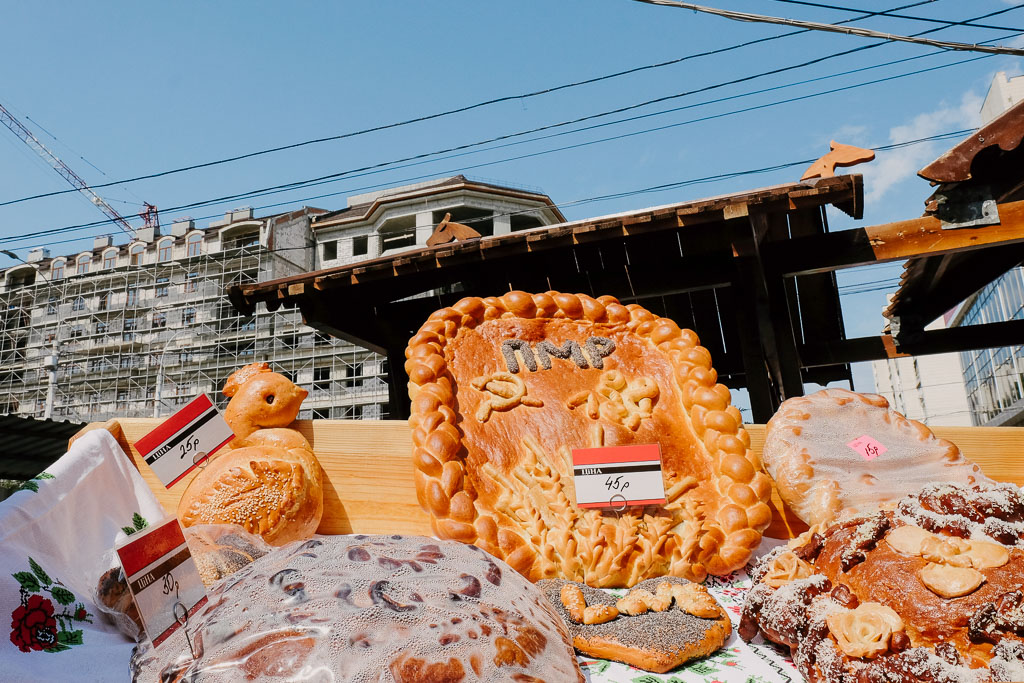
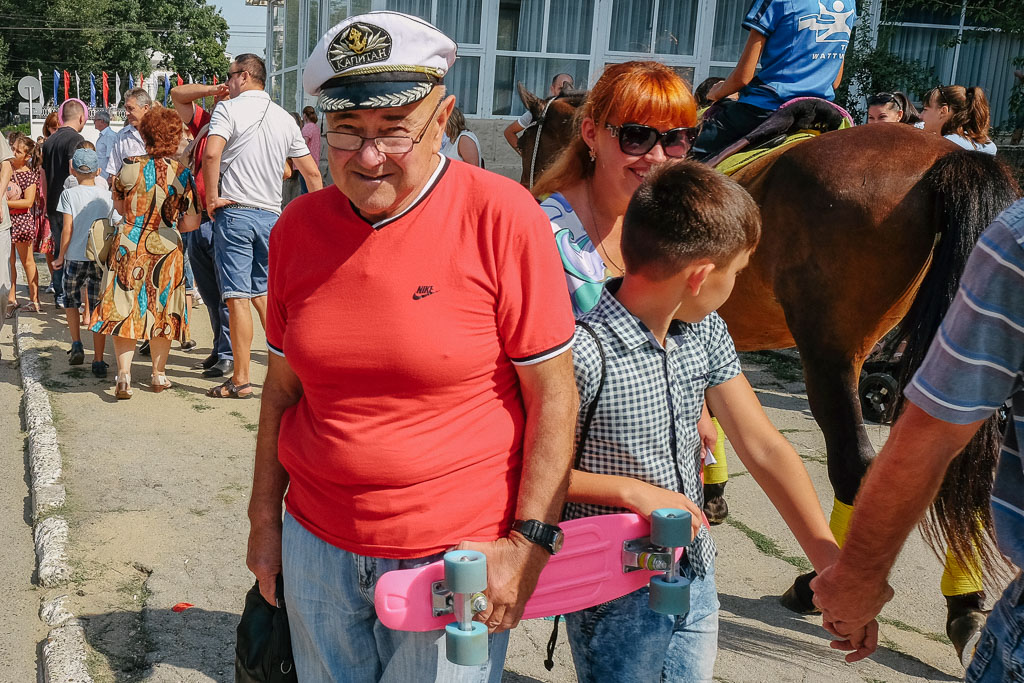
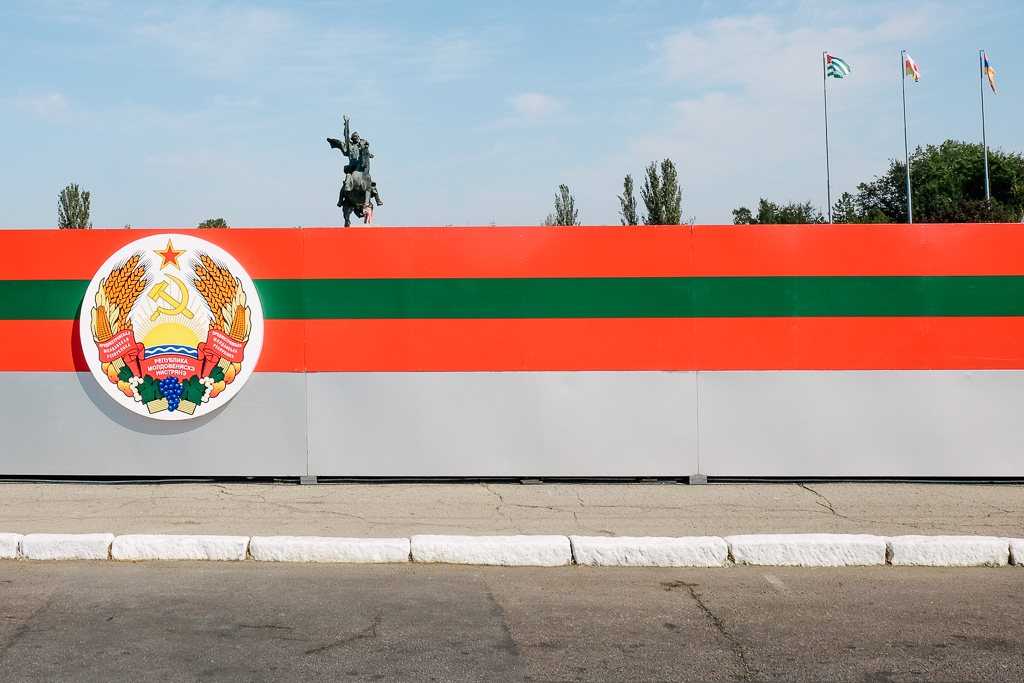
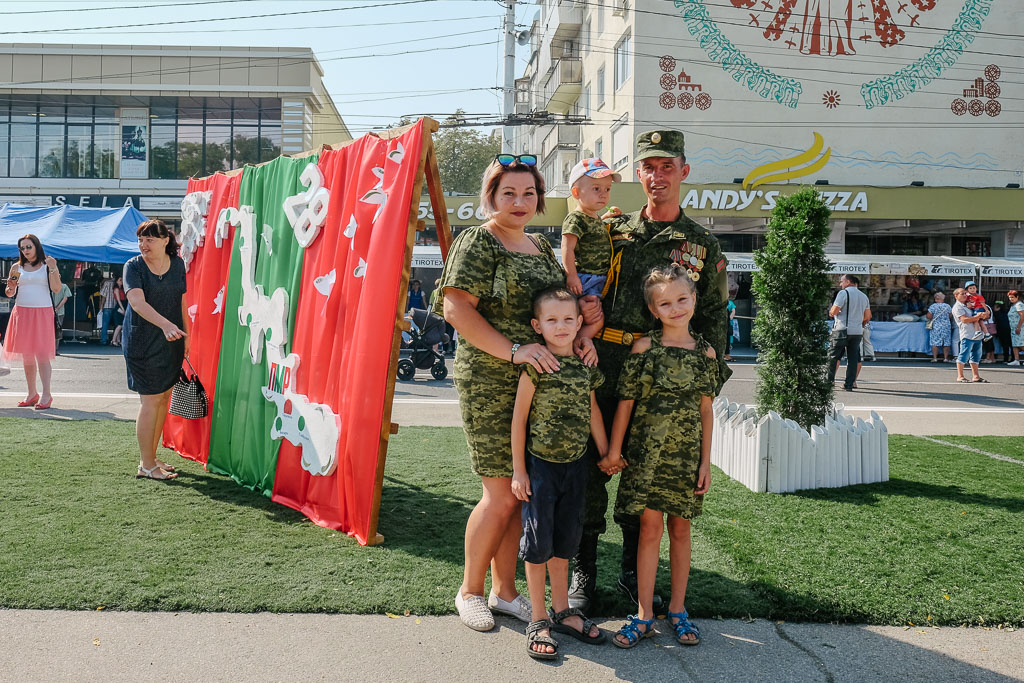
On banners and clothing, the national colours and emblems of both Russia and the USSR can be seen throughout the city. Locals spend Transnistrian Rubles on “I Love Russia” pins, and proudly wear pro-Russia, pro-USSR, and pro-Putin t-shirts. Even the national crest of Transnistria is a colourful throwback to the times of the Soviet Union, featuring a red star, hammer and sickle, corn cobs, grapes, and stalks of wheat, placed with an eye to the old-school communist design language around a rising sun. To put an exclamation point on the post-Soviet Eastern European cliche, Russian flags are flying everywhere.
Clearly, Transnistria is enamoured with Russia. It’s obvious that a shared history has bonded the two nations – not geographically, but surely in the hearts and minds of the locals. Although the 20th century in this region was genuinely complicated (even an abbreviated list of major events and turning points would be too extensive and well beyond the scope of this page), the events that lead to the creation of Transnistria explain why the Russian connection exists to this day.
Squeezed in between Ukraine and Moldova, Transnistria is over four-thousand square kilometers of land-locked territory. Small enough to cross East-to-West in an hour, but large enough North-to-South to hold half-a-million people, in more than a hundred cities, towns and other settlements. Sharing no borders with Russia itself, during the time of the Soviet Union Transnistria was part of the Moldavian Soviet Socialist Republic. At the time just prior to collapse of the USSR, it appeared this entire region would become the independent nation of Moldova – encompassing all of Transnistria.
Linguistically and ethnically the make-up of Transnistria differs significantly from the rest of Moldova, and even prior to the Soviet dissolution, tensions had been rising. In one particularly volatile policy, the Moldovan government officially removed Russian as a state language – the commonly accepted lingua-franco of Transnistria – along with the Cyrillic alphabet. More extreme proposals were put forth by various organisations in Moldova, including a radical plan to completely expel all ethnic Russians and Ukrainians from the lands of Transnistria.
With concerns about the increased efforts to marginalise them, activists in Transnistria created a separatist movement. Unwilling to be part of an independent Moldova, on September the 2nd 1990 Transnistria declared their own independence. Relations soured further, and limited armed clashes soon developed into a full-scale war between pro-Moldova and pro-Transnistria groups.
Volunteers and armed forces from Transnistria, Romania, Ukraine, Moldova, and Russia were involved in the conflict. Hundreds of lives were lost on both sides. Notable was the significant Russian military involvement – officially with a neutral stance – but their presence was crucial to the outcome of the war, and by the middle of 1992 a ceasefire agreement was signed.
Since that time the peace has been held – with the assistance of a small Russian peacekeeping force based in a demilitarised zone between Moldova and Transnistria. In 2019, the conflict remains unresolved – yet another of a small number of ongoing “frozen conflicts” that exist throughout the former USSR.
Moldova has completely lost (or abandoned) all effective control over the breakaway region, but officially continues to claim Transnistria as part of their own nation. However, in most regards Transnistria (officially the Pridnestrovian Moldavian Republic) can now be considered a de-facto independent state. With it’s own Parliament, army, air force, currency, postage stamps, flag, national anthem, and passports (the travel document is orecognised by only three other, also unrecognised, post-Soviet territories), Transnistria has most of what normally defines an independent country.
But, there is one major omission – almost three decades after declaring independence, not a single member of the United Nations recognises the existence of Transnistria – not even Russia. In spite of remaining unrecognised, this year Transnistria will again celebrate another national Independence Day.

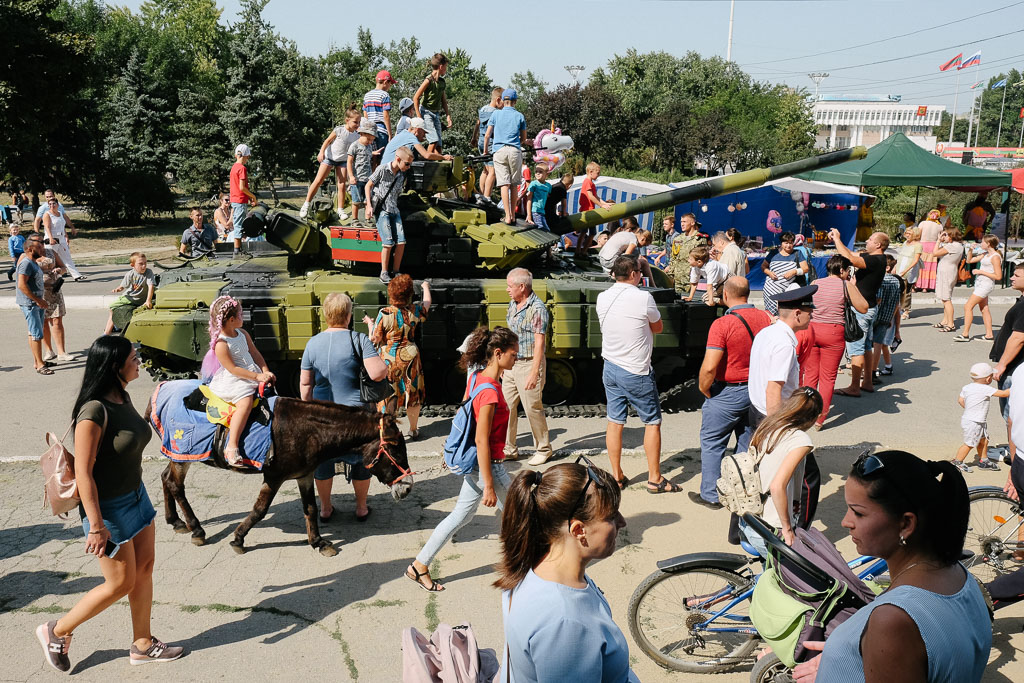
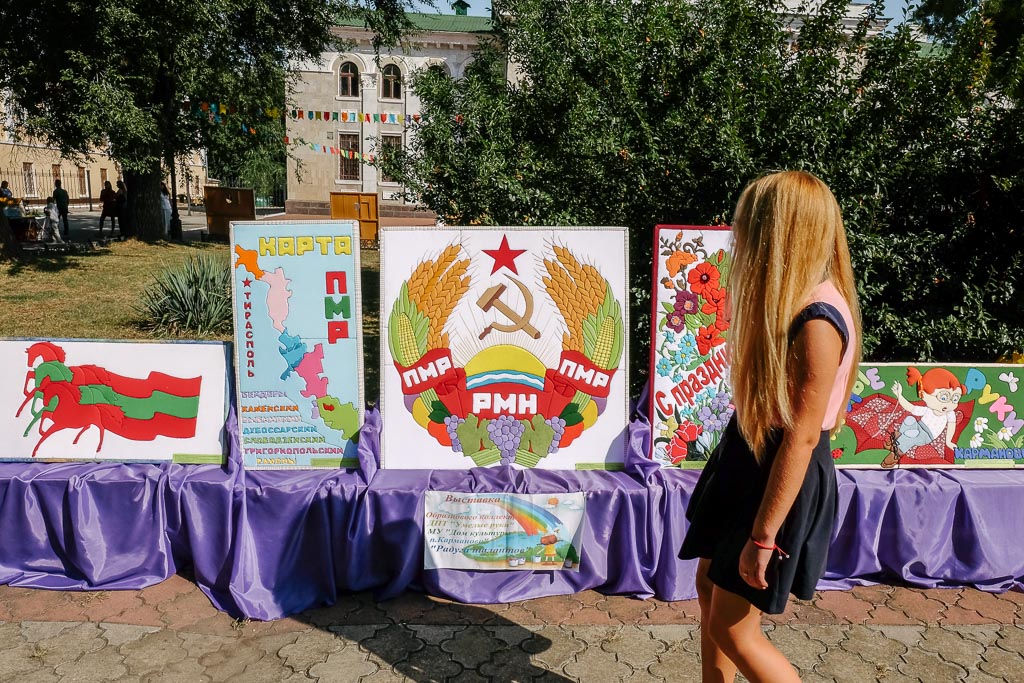
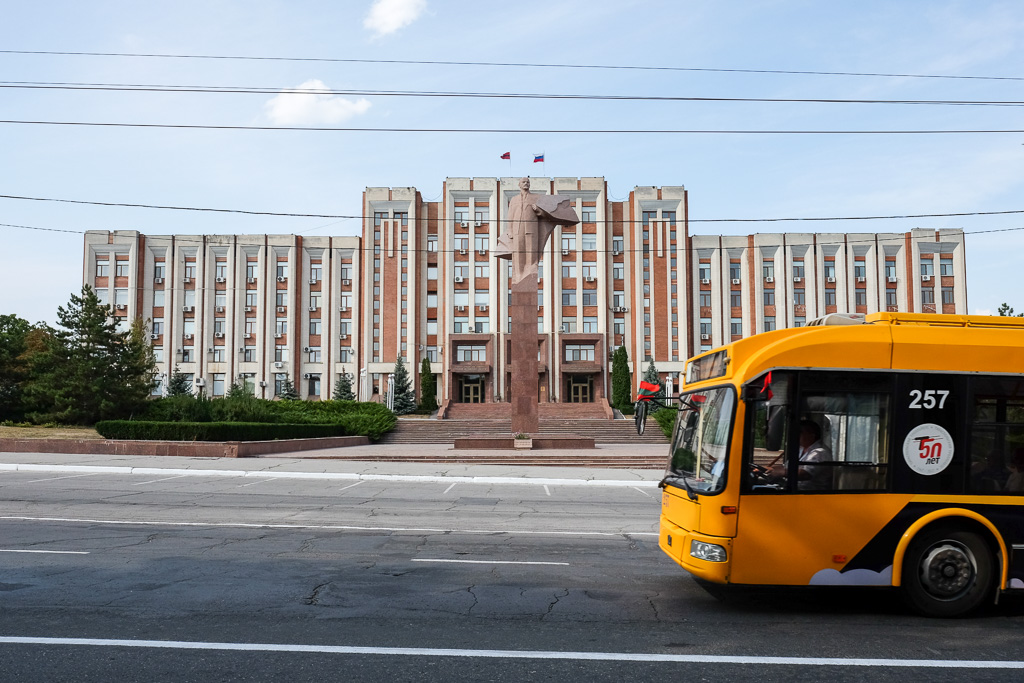
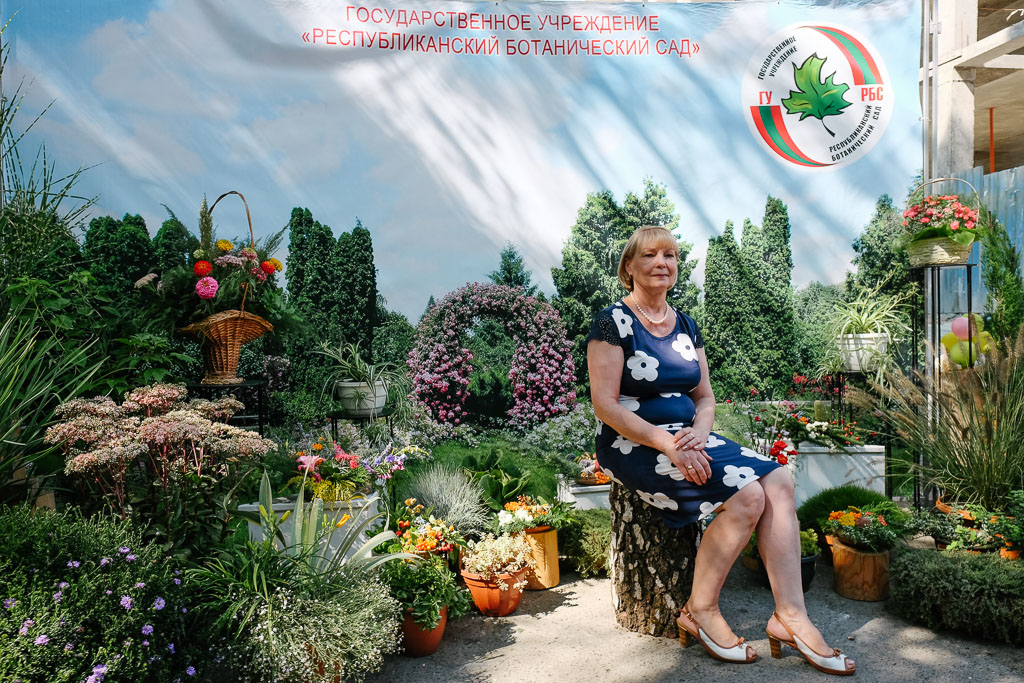
People in Tiraspol are friendly and welcoming towards the small number of foreign tourists who choose to visit Transnistria on Independence Day. Invitations to eat and drink are common. Smiling faces and outstretched hands will pull you into communal dancing circles. One older gentleman gifted our small group a large bottle of Vodka, obviously proud and a little excited to be seeing foreign tourists in his city (pre-midday, the gift was conditional upon being immediately opened and consumed, and not wishing to offend we happily obliged). Language barriers not withstanding, this is a day to join in and celebrate.
Although Tiraspol locals are often fascinated by the unfamiliarity of foreign tourists, there’s a certain degree of confusion as to why anyone would actually choose to visit their city. From my Western perspective, it would be obvious to anyone with a modicum of objectivity that visiting Transnistria isn’t for everyone.
There are problems and issues with entering and exiting an unrecognised state. I’m yet to find a travel insurance policy that’s both valid and useful. There’s zero consular representation, from any nation. Foreign credit cards won’t work in Transnistria. Although bringing in cash is essential (Euro, US dollars are best), those currencies are not accepted anywhere other than banks – who will exchange the foreign cash for plastic coins of an unrecognised currency. After three visits I’m unable to find consistent opinions on the safety of the local tap water.
Certainly, there are much more formidable issues for all foreign tourists who enter (and exit) Transnistria.

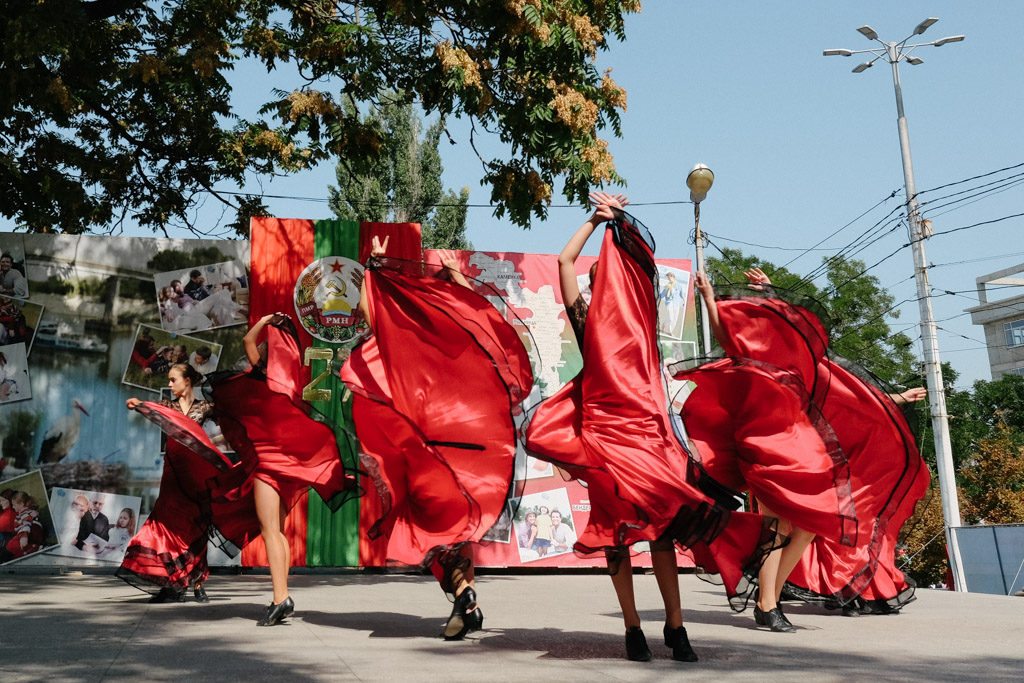

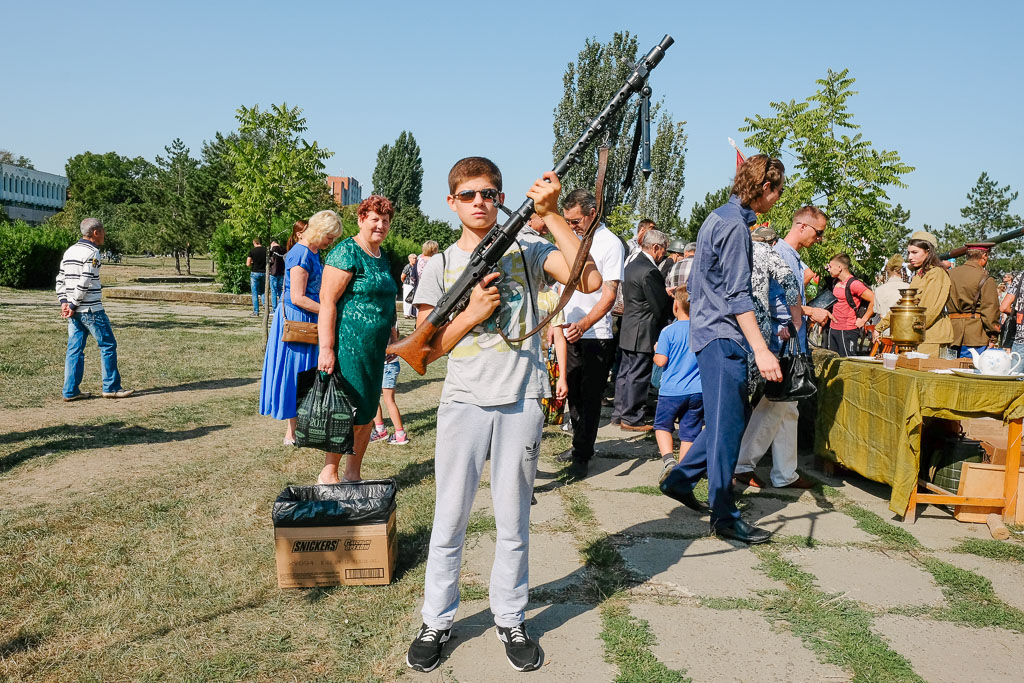

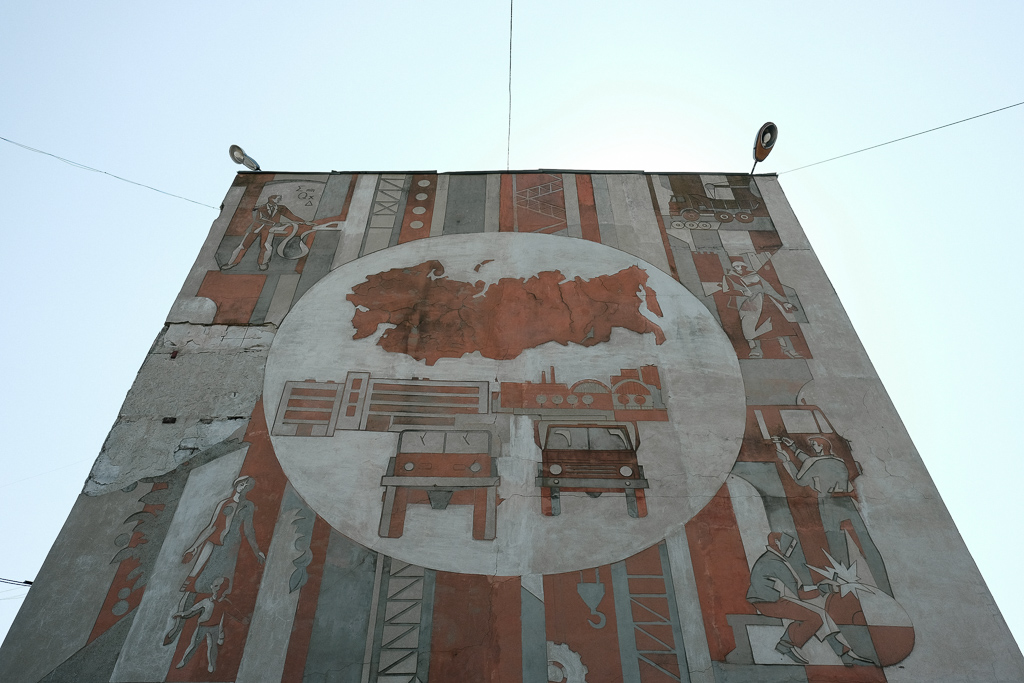
Back in 2013, I had to negotiate in broken Russian for thirty minutes with two border agents who weren’t going to let me leave Transnistria until I paid a significant bribe. In 2017 and 2018, upon entering Moldova-proper, I needed to visit the government department that deals with refugees, before I was allowed to leave Moldova. In their judgement I’d entered the country across a border they don’t recognise – I needed to either explain my actions, or apply for asylum status. These potential problems are par-for-the-course when visiting Transnistria – but seem to be disappearing with time, and largely dependent upon which border crossings you choose.
The question – is it worth the trouble to visit? Truth be told, on most days of the year Transnistria is pretty boring. Little more than a sleepy version of old-Russia, just a stopover for socially-awkward Soviet-nerds, collecting a rare set of passport stamps before returning to the most boring jobs in the world back in Birmingham.
However, on Independence Day, a completely unique travel experience. Walking around Tiraspol is undeniably surreal, and a lot of fun – after all, this is a street party within a genuine cold-war-era time-warp. I’ll be back again in September 2019, and hopefully in 2020 for the thirty-year celebration.
Nate
PS, this year we were the first people in history to catch an Uber to the borders of Transnistria. Big hello to the three lovely ladies I shared the ride with.
PPS, apologies to my regular readers for the lack of updates. Since my last post I’ve been guiding and organising MANY Iran tours, working with other tour organisations, and travelling through Italy, Ukraine, Iran, Oman, and more. I’m currently writing this from Dhaka, Bangladesh. It really means a lot to me that you continue to follow my journey, after all this time I’m just getting started…
21 thoughts on “Transnistria – Celebrating Independence Day in the Country That Doesn’t Exist”
Comments are closed.



So cool that you visited during independence day! Was English more widely-spoken than expected or did you struggle to find many locals to chat with? And how did you get along with those who didn’t share a language?
Hey Zac,there’s a reasonable level of English, but it can be a bit of a barrier. However, I find that the locals are so friendly, they spot you as a tourist, and if they speak English they will approach and have a chat.
Hey Nate,
So happy there’s still off-the-wall places for you to ferret out and glad that Iran is still going strong – so much fun! We’re glued to ‘Chernobyl’ here – q 5 part HBO series available wherever one gets media from these days, highly recommended. I just got back from a couple of months in Xinjiang accompanied by my very own plain clothes police minders and then western china which was very tame by comparison.
Cheers
Claudia ;)
It is always joyful to read your articles. And now that I have met you in person it’s very easy to see you all over the text. I think you are a very talented communicator, not just a writer.
I’m interested in visiting Transnistria, but as I told you, I need to make my travelling time worthwhile, because the place is far from home and tickets are expensive.
Cheers, my friend!
Padu.
Hello my Brazilian brother! You are welcome wherever I am, and the feeling is mutual – I really enjoyed my time hanging with you. Let’s do it again some time.
Yo! This is curtains man. Nice reporting as always. I am going to see if YouTube has any footage.
That gun though. Frree fifty and deal ;) hahaha
Okay Nate!
When / or where is the Yomadic Podcast?! When / or where is the Yomadic coffee table book?! And when do you and yours decide to find home and create a center for Eastern European creative center?!
Be well you road pirate!
Laurence
Did you know that the word “transnistria” is deeply offensive to Pridnestrovians? You wrote a rather interesting and colorful article, but in this context it looks like an insult to the country that you visit not the first time as a guest. This is at least stupid and mean. Including in relation to those who want to receive information about traveling to this country on your example, because they may have problems using this word in communication with local people.
Hi, to be very frank and honest, nobody in Transnistria has ever mentioned to me that the word is “deeply offensive”. I have also never heard of any tourist having any issue when using this name. Perhaps, as a foreigner, we are being forgiven for this. In English, the Pridnestrovian Moldavian Republic is normally referred to as either Transnistria, Trans-Dniestr, or Transdniestria – no offence is implied.
On the other hand, you have implied that I am stupid and mean, which is clearly offensive, but I don’t actually care.
Nice perspective on Transnistria! It is always good to see articles on Transnistria, it is a very interesting place. Political Holidays (www.politicalholidays.com/transnistria) works a lot with Transnistria and other unrecognized countries. Let us know if you want to share ideas on the subject!
Are you a Romanian Nazi?
Wow
So good that you visited during independence day. It is a very interesting place.
He’s a real Nazi moron. I think he shouldn’t take any more risks appearing in Pridnestrovie.
I look forward to my next visit, will I see you there?
(BTW, these “Nazi” comments are coming from ip addresses in Moldova, not Transnistria/Pridnestrovie)
The celebration is just like in Kyrgyzstan on a Victory Day. Nice article!
Thanks Sergey, and very interesting… I’m overdue for a return visit to Kyrgyzstan…
Transnistria? I sincerely hope that your children will die in the gas chamber of the concentration camp for this insult, and you will end your life in the uranium mines.
You just used the same word.
You could have just said “Приднестровская Молдавская Республика”, or even better,why not re-read the very pro-Приднестровская Молдавская Республика article above?
Nate Robert, there is no need to read the article in which Pridnestrovie is called by offensive Nazi term, it is a priori politicized, biased and deceitful, insulting the whole people with just one title. You are cowards, scoundrels and provocateurs who can only crap on the Internet.
If I change the term, to suit your opinion, that of a person who wishes “I sincerely hope that your children will die in the gas chamber of the concentration camp”, I would be ashamed of myself.
Clearly, any person who read this article realises it’s a love-letter to the GOOD people of Pridnestrovie/Transnistria/Приднестровская Молдавская Республика.
No further comments are needed here, please visit somewhere else on the internet – perhaps start here: https://en.wikipedia.org/wiki/Transnistria